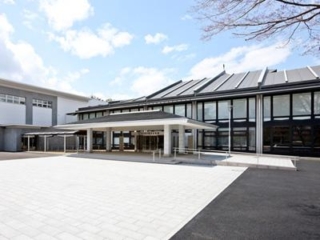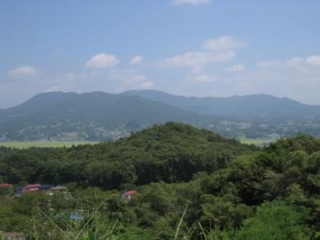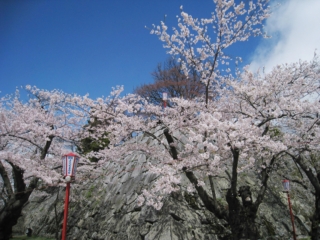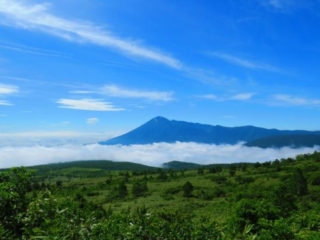MODEL COURSE
Come to the plaza

This information dissemination base was named after the Morioka dialect for ``Please come.'' In addition to the `` Tourism and Culture Information Plaza '' on the second floor, there is also a shop selling specialty products and a light snack cafe. In addition, the `` Morioka Tegami Museum '' on the 6th floor stores and exhibits letters and diaries of great people connected to Morioka.
Detailed Destination Information
Nitobe Inazo’s birthplace (bronze statue)

To commemorate the 50th anniversary of the death of Inazo Nitobe, a cosmopolitan man born in his hometown who ``hopefully becomes a bridge over the Pacific Ocean'', Morioka City built this building on his birthplace in Shimonohashi Town with donations from citizens. Author Fumio Asakura). During the Pacific War, its achievements were largely ignored, and its legacy was only remembered by a few people, but after the war, its role was properly reviewed and reevaluated on both sides of the Pacific.
Detailed Destination Information
Kenji Shimizu

This is the communal well that Kenji Miyazawa used when he was a student at Morioka High School of Agriculture and Forestry (currently Iwate University Faculty of Agriculture) in 1912, when he was lodging with his younger brother Seiroku and cousin at the Tamai family in Osawagawara 1-chome. It is still freely available.
Detailed Destination Information
Morioka Castle Ruins Park (Iwate Park)

This is the former site of Morioka Castle, which was the residence of the lords of the Nanbu domain. Morioka Castle was completed in 1633 during the reign of Shigenao, the third lord of the domain.
The castle was built on a hillside at the confluence of the former Kitakami River and Nakatsu River.
Today, the stonewalls and pond remain, and the area is known as Morioka Castle Ruins Park, which is enjoyed by citizens throughout the four seasons.

Morioka History and Culture Museum

The building, which had been used as the Iwate Prefectural Library, was completely renovated and opened in 2011 in a corner of Morioka Castle Ruins Park (Iwate Park). The first floor introduces Morioka's festivals (Chagu Chagu Umako, Morioka Sansa Odori, Morioka Autumn Festival floats) and seasonal tourist information, while the second floor displays the history of the Morioka clan and the treasures of the Nanbu family. There is also a cafe (rest area ``Fukikata''). Please stop by to experience the history and culture of the castle town of Morioka and enjoy walking around the town.
Detailed Destination Information
poetry promenade

upper bridge fake jewel

The bridge above was built by Toshinao, the lord of the Nanbu domain, over the Nakatsugawa River at the same time as he built Morioka Castle. Of the bronze imitation jewels decorating the railing, eight have inscriptions dated to 1609 (Keicho 14), and 10 have inscriptions dated to 1611 (1611). It is extremely rare that so many remain, and in 1945 it was designated as a nationally important art object.
Detailed Destination Information
Konyamachi Banya

The remains of the fire station, which was built in 1913 (Taisho 2) and is a Morioka city landscape important building. After undergoing earthquake-proofing and renovation work, it reopened as a new exchange experience facility in March 2022 (Reiwa 4). There is a cafe and miscellaneous goods sales on the first floor, and a weaving workshop on the second floor, where you can also experience it by making a reservation. You can relax in a restaurant that exudes Taisho romance.
Detailed Destination Information
Iwate Bank Red Brick Building

It opened as Iwate Bank Red Brick Building on Sunday, July 17, 2016. Built to the design of Kingo Tatsuno and Manji Kasai Architects, the former Morioka Bank is built of red brick with a green dome, and its exterior has a strict Renaissance-style outline. Located in the center of the city, it combines with the Nakatsu River and Nakano Bridge to form Morioka's representative landscape. A nationally designated important cultural property built in 1909.
Detailed Destination Information
Morioka Takuboku/Kenji Seishunkan

The Morioka Takuboku and Kenji Youth Museum is located in the former Dai Kuju Bank, which was completed in 1908, and introduces the town of Morioka where Takuboku Ishikawa and Kenji Miyazawa grew up and their youth.
Designated as a National Important Cultural Property on July 6, 2004







